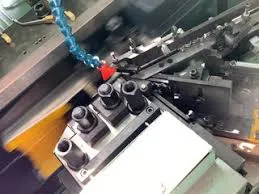
-
 Afrikaans
Afrikaans -
 Albanian
Albanian -
 Amharic
Amharic -
 Arabic
Arabic -
 Armenian
Armenian -
 Azerbaijani
Azerbaijani -
 Basque
Basque -
 Belarusian
Belarusian -
 Bengali
Bengali -
 Bosnian
Bosnian -
 Bulgarian
Bulgarian -
 Catalan
Catalan -
 Cebuano
Cebuano -
 Corsican
Corsican -
 Croatian
Croatian -
 Czech
Czech -
 Danish
Danish -
 Dutch
Dutch -
 English
English -
 Esperanto
Esperanto -
 Estonian
Estonian -
 Finnish
Finnish -
 French
French -
 Frisian
Frisian -
 Galician
Galician -
 Georgian
Georgian -
 German
German -
 Greek
Greek -
 Gujarati
Gujarati -
 Haitian Creole
Haitian Creole -
 hausa
hausa -
 hawaiian
hawaiian -
 Hebrew
Hebrew -
 Hindi
Hindi -
 Miao
Miao -
 Hungarian
Hungarian -
 Icelandic
Icelandic -
 igbo
igbo -
 Indonesian
Indonesian -
 irish
irish -
 Italian
Italian -
 Japanese
Japanese -
 Javanese
Javanese -
 Kannada
Kannada -
 kazakh
kazakh -
 Khmer
Khmer -
 Rwandese
Rwandese -
 Korean
Korean -
 Kurdish
Kurdish -
 Kyrgyz
Kyrgyz -
 Lao
Lao -
 Latin
Latin -
 Latvian
Latvian -
 Lithuanian
Lithuanian -
 Luxembourgish
Luxembourgish -
 Macedonian
Macedonian -
 Malgashi
Malgashi -
 Malay
Malay -
 Malayalam
Malayalam -
 Maltese
Maltese -
 Maori
Maori -
 Marathi
Marathi -
 Mongolian
Mongolian -
 Myanmar
Myanmar -
 Nepali
Nepali -
 Norwegian
Norwegian -
 Norwegian
Norwegian -
 Occitan
Occitan -
 Pashto
Pashto -
 Persian
Persian -
 Polish
Polish -
 Portuguese
Portuguese -
 Punjabi
Punjabi -
 Romanian
Romanian -
 Russian
Russian -
 Samoan
Samoan -
 Scottish Gaelic
Scottish Gaelic -
 Serbian
Serbian -
 Sesotho
Sesotho -
 Shona
Shona -
 Sindhi
Sindhi -
 Sinhala
Sinhala -
 Slovak
Slovak -
 Slovenian
Slovenian -
 Somali
Somali -
 Spanish
Spanish -
 Sundanese
Sundanese -
 Swahili
Swahili -
 Swedish
Swedish -
 Tagalog
Tagalog -
 Tajik
Tajik -
 Tamil
Tamil -
 Tatar
Tatar -
 Telugu
Telugu -
 Thai
Thai -
 Turkish
Turkish -
 Turkmen
Turkmen -
 Ukrainian
Ukrainian -
 Urdu
Urdu -
 Uighur
Uighur -
 Uzbek
Uzbek -
 Vietnamese
Vietnamese -
 Welsh
Welsh -
 Bantu
Bantu -
 Yiddish
Yiddish -
 Yoruba
Yoruba -
 Zulu
Zulu
Understanding HS Codes for Thread Rolling Machine Exporters and Their Global Trade Implications
Understanding the HS Code for Thread Rolling Machines and Its Importance for Exporters
In the global trade ecosystem, the Harmonized System (HS) code plays a critical role in the classification of goods. It is a standardized numerical method of classifying traded products, which helps in customs duties, trade statistics, and the enforcement of trade policies. One specific area within this extensive system is the classification of machinery, such as thread rolling machines, which have become vital to various manufacturing processes.
What is a Thread Rolling Machine?
Thread rolling machines are specialized tools used in manufacturing to create threads on metal or plastic workpieces. This process involves deforming the raw material, often through the application of heat and pressure, to form patterns and threads without cutting the material. Thread rolling is prized for its ability to produce strong, precise threads that are integral to various applications across industries, including automotive, aerospace, and construction.
The Significance of HS Codes for Exporters
For exporters dealing in machinery like thread rolling machines, correctly identifying the HS code relevant to their products is essential for several reasons
1. Customs Clearance The HS code determines the tariffs and duties that will be applied to a product during international shipping. Exporters must ensure their machines are correctly classified to avoid unnecessary penalties and delays at the customs checkpoint.
2. Trade Compliance Different countries have specific regulations, restrictions, and standards that apply to imported machinery. By using the correct HS code, exporters can navigate these complex regulations more easily and ensure compliance with international trade laws.
thread rolling machine hs code exporters

3. Market Access Different HS codes can impact a product's eligibility for trade agreements. Understanding the classification can help exporters take advantage of preferential tariff treatments available under various free trade agreements.
4. Statistical Analysis Proper classification allows exporters to gather data on market trends, competitor activity, and demand forecasting, enabling informed decision-making and strategy development.
Determining the Correct HS Code for Thread Rolling Machines
The HS code for thread rolling machines typically falls under the broader category of machinery for working metal. However, the exact classification can vary depending on specific features, functions, and construction materials of the machines. It is vital for exporters to consult the latest HS code directory and verify classifications with regulatory bodies in their country and in the destination markets.
Additionally, working with experienced customs brokers can provide valuable insights and help ensure that machine classifications are accurate, which can mitigate risks associated with international shipping.
Conclusion
In summary, the HS code for thread rolling machines is more than just a number; it is a vital component of successful international trade. Exporters must prioritize accurate classification to facilitate smooth customs clearance, ensure compliance with trade regulations, and leverage market opportunities. As the demand for precision-engineered machinery continues to grow, understanding the importance of HS codes will enable manufacturers and exporters to better navigate the complex landscape of global trade. As businesses expand their reach, their knowledge of HS codes can ultimately be a determining factor in their success in international markets.
